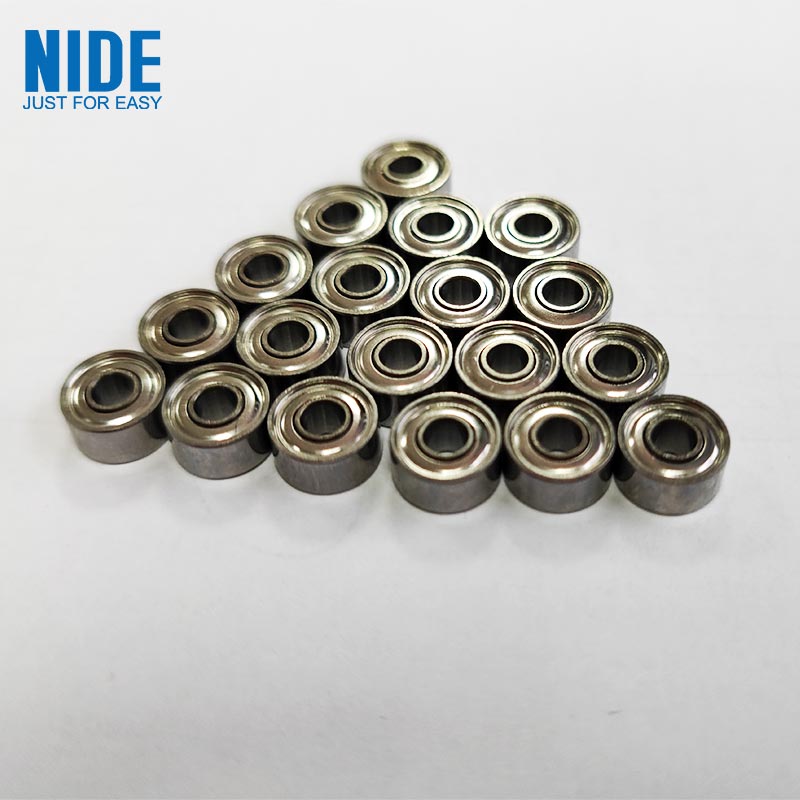What are the advantages and disadvantages
2024-10-02

What are the advantages of Flange Bearings?
Flange bearings offer several advantages over other types of bearings. Firstly, they are easy to mount and dismount, thanks to the flange on their outer ring. This makes them ideal for applications where the bearing needs to be changed or replaced frequently. Secondly, flange bearings are known for their durability and can withstand heavy loads without bending or breaking. Thirdly, they are self-aligning, which means they can compensate for any misalignment in the system.What are the disadvantages of Flange Bearings?
Flange bearings also have some disadvantages. One of the main disadvantages is that they are more expensive than other types of bearings. Secondly, they can be difficult to mount correctly, which can lead to problems such as misalignment or premature wear. Thirdly, flange bearings can generate more heat than other types of bearings, which can lead to a decrease in performance.How do you choose the right Flange Bearing?
When choosing a flange bearing, there are several factors to consider. Firstly, the size of the bearing should match the shaft it will be mounted on. Secondly, the load capacity of the bearing should be sufficient for the application it will be used in. Thirdly, the speed rating of the bearing should match the speed of the system it will be used in. Finally, the material of the bearing should be chosen based on its resistance to corrosion, wear, and temperature.What are some common applications of Flange Bearings?
Flange bearings are commonly used in machinery and conveyor systems. They are also used in the automotive industry, where they are used in steering and suspension systems. Flange bearings are also used in the construction industry, where they are used in cranes and other heavy equipment.In conclusion, Flange Bearings have both advantages and disadvantages. They are easy to mount and dismount, durable, and self-aligning. However, they are more expensive than other types of bearings, can be difficult to mount correctly, and can generate more heat. When choosing a flange bearing, factors such as size, load capacity, speed rating, and material should be considered.
Ningbo Haishu Nide International Co., Ltd. is a leading manufacturer of motor components and offers a wide range of flange bearings. Our bearings are made from high-quality materials and are designed to withstand heavy loads and high speeds. Contact us at marketing4@nide-group.com to learn more about our products and services.
Research Papers
1. Bhandari, V., & Rastogi, P. (2010). "A Review of Ball Bearing Design and Manufacturing Techniques". International Journal of Engineering Science and Technology, Vol. 2, No. 7, 2495-2521.
2. Houpis, C. H. (2008). "Experimental Investigation of the Dynamic Behavior of Flange Bearings". Journal of Vibration and Acoustics, Vol. 130, No. 2, 021015.
3. Lee, J., & Yoon, J. W. (2015). "A Comparative Study of Flange Bearing Lubrication Methods". Journal of Tribology, Vol. 137, No. 4, 041702.
4. Li, L., & Chen, X. (2017). "Design and Optimization of a Flange Bearing for High-Speed Applications". Applied Sciences, Vol. 7, No. 2, 168.
5. Mishra, A., & Ratha, M. (2012). "Dynamic Behavior of Flange Bearing in Rotor Systems". Journal of Mechanical Science and Technology, Vol. 26, No. 2, 601-612.
6. Moaveni, B., & Noori, M. (2014). "An Analytical and Experimental Study of Flange Bearings for Aerospace Applications". Aerospace Science and Technology, Vol. 36, 36-46.
7. Rubinstein, M. (2011). "A Study of the Mechanical Properties of Flange Bearings". Journal of Testing and Evaluation, Vol. 39, No. 2, 339-345.
8. Saito, S., & Toda, Y. (2016). "Numerical Analysis of Lubrication Characteristics in Flange Bearings with Oil Grooves". Tribology International, Vol. 97, 1-9.
9. Wang, X., & Yang, Y. (2013). "A Study on the Dynamic Characteristics of Flange Bearings". Journal of Vibration Engineering & Technologies, Vol. 1, No. 2, 167-174.
10. Zhang, W., & Ma, L. (2018). "Investigation into the Tribological Behavior of Flange Bearings under High-Speed Conditions". Journal of Materials Research and Technology, Vol. 7, No. 3, 271-279.

